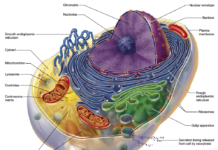Modern Remedy From Ancient Lore
By Jim English
History is rich with references to rosemary (Rosmarinus officinalis L.), a small, perennial evergreen shrub native to the Mediterranean. Egyptians and Greeks considered rosemary to be a sacred plant, associated with love, death, and remembrance. In Egypt rosemary was used to embalm the dead, and sprigs were placed in tombs to symbolize the memory of the departed.
In Medieval times rosemary was considered to be a love charm and a sign of remembrance and fidelity. Believing that rosemary would help a married couple remember their wedding vows, the herb was often placed on the bride’s head as a wreath, and rosemary wine was used to toast the couple. As Ophelia says in Shakespeare’s Hamlet, “There’s Rosemary, that’s for remembrance: pray you love, remember.”
The Romans believed that rosemary improved memory (the first Smart Drug?), and students massaged rosemary oil into their forehead and temples before taking examinations. In Greece, healers believed that rosemary could treat problems of the liver, circulation, and digestion. In ancient China the herb was considered effective for treating headaches and, when applied to the scalp, was thought to cure baldness. (1)
Recent Findings
Many of the traditional uses of rosemary are supported by modern research. In addition to the essential oil eucalyptol (cineole), researchers have isolated a number of potentially therapeutic compounds, including tannins, flavonoids, caffeic acid derivatives such as rosmarinic acid, and diterpenes such as carnosol or carnosic acid. All of these may have potential therapeutic effects. In recent years, rosemary has developed a reputation for antibacterial and antifungal action, and herbalists recommend that the leaves be used externally for skin infections.
Cancer
Of all the potential therapeutic effects of rosemary, the most exciting is its role in preventing cancer. Researchers have demonstrated that natural polyphenols found in rosemary have potent anticarcinogenic properties. To date, rosemary extract, or its active components, carnosol, carnosic acid, and rosmarinic acid, have been shown to prevent cancer by several actions.
Antioxidanty Activity
Research into the free-radical quenching effects of rosemary have found it to be a potent antioxidant, possessing greater activity than the common food additives BHT (tert-butyl-4-hydroxytoluene) and BHA (tert-butyl-4-hydroxyanisol). (2) The discovery of the antioxidant activity of rosemary in biological systems supports the historical use of rosemary as a preservative for meats and foods.
Estrogen Blocker
Researchers have shown that rosemary enhances the metabolism and removal of endogenous estrogens and decreases their cancer-promoting actions. Researchers evaluated the effects of rosemary extract on the metabolism and action of estradiol and estrone given to female mice. The results of the study showed that feeding female mice a 2% rosemary diet increased liver microsomal oxidation and glucuronidation of estradiol and estrone and inhibited their uterotropic action. (3)
Carcinogen Blocker
Researchers have found that rosemary extract can prevent carcinogens from binding to and possibly mutating cellular DNA – two early steps in initiating cancer. In one study, researchers compared the effects of whole rosemary extracts to its purified components, carnosol and ursolic acid, on the initiation of breast cancer in rats. They found that whole rosemary extract taken orally prevented the carcinogen 7, 12-dimethyl-benz[a]anthracene (DMBA) from binding to the rats’ breast cell DNA. Neither carnosol nor ursolic acid had any effect when taken orally. When injected, whole rosemary extract and carnosol (but not ursolic acid) decreased carcinogen binding to DNA and decreased tumor formation by 37 percent. Again, ursolic acid had little effect. (4)
Conclusion
Rosemary clearly is an herb with many benefits. Valued for its contributions in the kitchen, and prized by modern herbalists for its traditional healing powers, rosemary is now beginning to reveal its true life-enhancing powers to modern scientific research. Current findings show that rosemary is a powerful antioxidant and anti-inflammatory agent, and that it prevents carcinogens from binding to DNA, and stimulates liver detoxification of carcinogens. Ongoing research will continue to elucidate the role of this herb in health, but we don’t need to wait to begin to enjoy the life-enhancing benefits of this herb.
References
1, Leung AY, Foster S. Encyclopedia of Common Natural Ingredients Used in Foods, Drugs, and Cosmetics, 2d Ed. New York: John Wiley & Sons, 1996, 446–48.
2. Ho, C-T., et al. “Phytochemicals in tea and rosemary and their cancer-preventive properties.” In Ho, C-T., et al., eds., Food Phytochemicals for Cancer Prevention, II: 2-19. Washington, DC: American Chemical Society, 1994.
3. Zhu BT, Loder DP, Cai MX, Ho CT, Huang MT, Conney AH. Dietary administration of an extract from rosemary leaves enhances the liver microsomal metabolism of endogenous estrogens and decreases their uterotropic action in CD-1 mice. Carcinogenesis. 1998 Oct 19:10 1821-7.
4. Singletary, K., et al. “Inhibition by rosemary and carnosol of 7,12-dimethylbenz[a]anthracene (DMBA)-induced rat mammary tumorigenesis and in vivo DMBA-DNA adduct formation.” Cancer Letters, 104: 43-48, 1996.














[…] T. (2013, May 24). Rosemary. Retrieved April 04, 2017, from https://nutritionreview.org/2013/04/rosemary/ […]
[…] T. (2013, May 24). Rosemary. Retrieved April 04, 2017, from https://nutritionreview.org/2013/04/rosemary/ […]
[…] T. (2013, May 24). Rosemary. Retrieved April 04, 2017, from https://nutritionreview.org/2013/04/rosemary/ […]